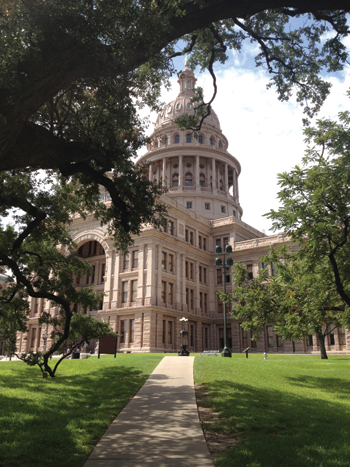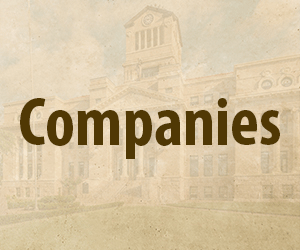 “This building fires the heart and excites reflections in the minds of all…the architecture of a civilization is its most enduring feature, and by this structure shall Texas transmit herself to posterity…”
“This building fires the heart and excites reflections in the minds of all…the architecture of a civilization is its most enduring feature, and by this structure shall Texas transmit herself to posterity…”
– Temple Houston, son of Sam Houston, at the dedication of the Capitol.
On Feb. 1, 1882, officials broke ground on the Capitol site near the center of Austin. Six years and 10 months later, on Dec. 8, 1888, the $3.7 million Capitol was accepted by the Capitol Board.
The Capitol was preceded by two other structures in Austin, the first of which perched on a hilltop west of Congress Avenue. Fashioned of Bastrop plank lumber, this building was replaced in 1853 with a Greek Revival structure on Capitol Square. Plans were already underway for the third and final Capitol in Austin when the second building burned in 1881. In fact, the Capitol Board was meeting in the building at the time of the fire.
Elijah E. Myers won a nationwide design competition to become the Capitol’s architect. Contractors were offered 3 million acres in the Texas Panhandle in exchange for constructing the Capitol. The traded acreage would later become the famous XIT Ranch.
Limestone was cited as the original building exterior. However, when exposed to air, the quarried stone streaked. Granite was proposed as a replacement. Construction was delayed for approximately two years before the decision was made to use “Sunset Red” granite on the exterior walls.
The interior walls are Texas limestone, while the roof is fashioned of copper.
The Texas Capitol has the distinction of being taller by more than 14 feet than the U.S. Capitol in Washington, D.C.
The building’s original floors were encaustic clay tile, glass block and wood. However, in 1936 a new corridor floor was installed on the first floor, and later on the second, third and flour floors, in honor of the centennial of Texas independence. The floor, which is intact today, is made of terrazzo, mostly Texas marble aggregate.
The Capitol’s interior walls boast wainscoting primarily made of oak, but pine, cherry, cedar, walnut and mahogany were also used on a limited basis. The window and door frames are fashioned of oak or pine, except for those in other select areas including the Governor’s Reception Room, which are constructed of cherry.
In May 1888, festivities were organized to celebrate “the splendor that was befitting the glory of Texas and the grandeur of that building.” The dedication included drill team competitions, military displays, fireworks, concerts and a parade.
On January 11, 1993, the Capitol Extension opened to the public. Considered a permanent part of the Capitol, the underground Extension connects to the Capitol and four other state buildings via tunnels.
The Extension includes skylights, known as light courts, which allow for a large amount of natural light and provide appealing views of the Capitol dome. The Extension is comprised of 16 committee hearing rooms, eight conference rooms, a bookstore, a cafeteria and a large auditorium.
– Information supplied by the State Preservation Board – Caretakers of the Texas Capitol







